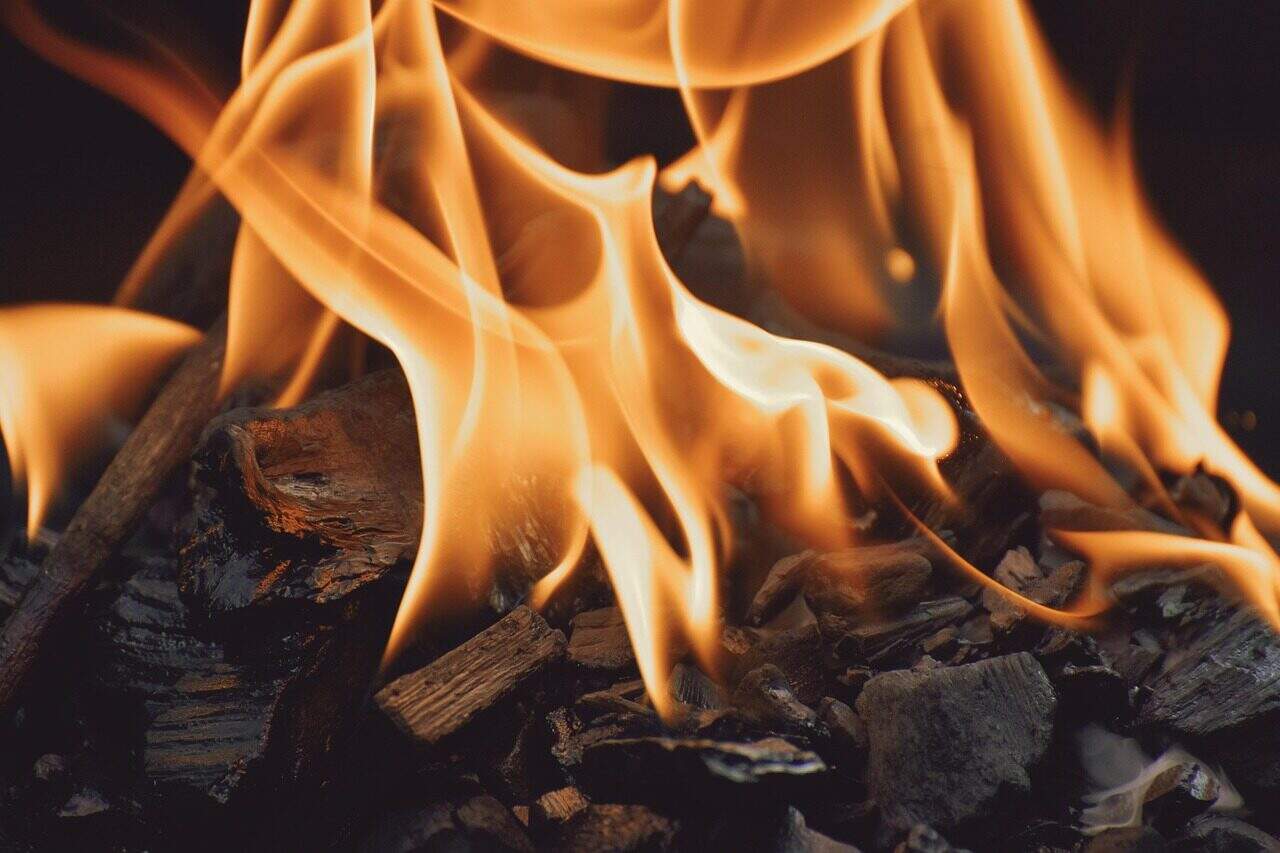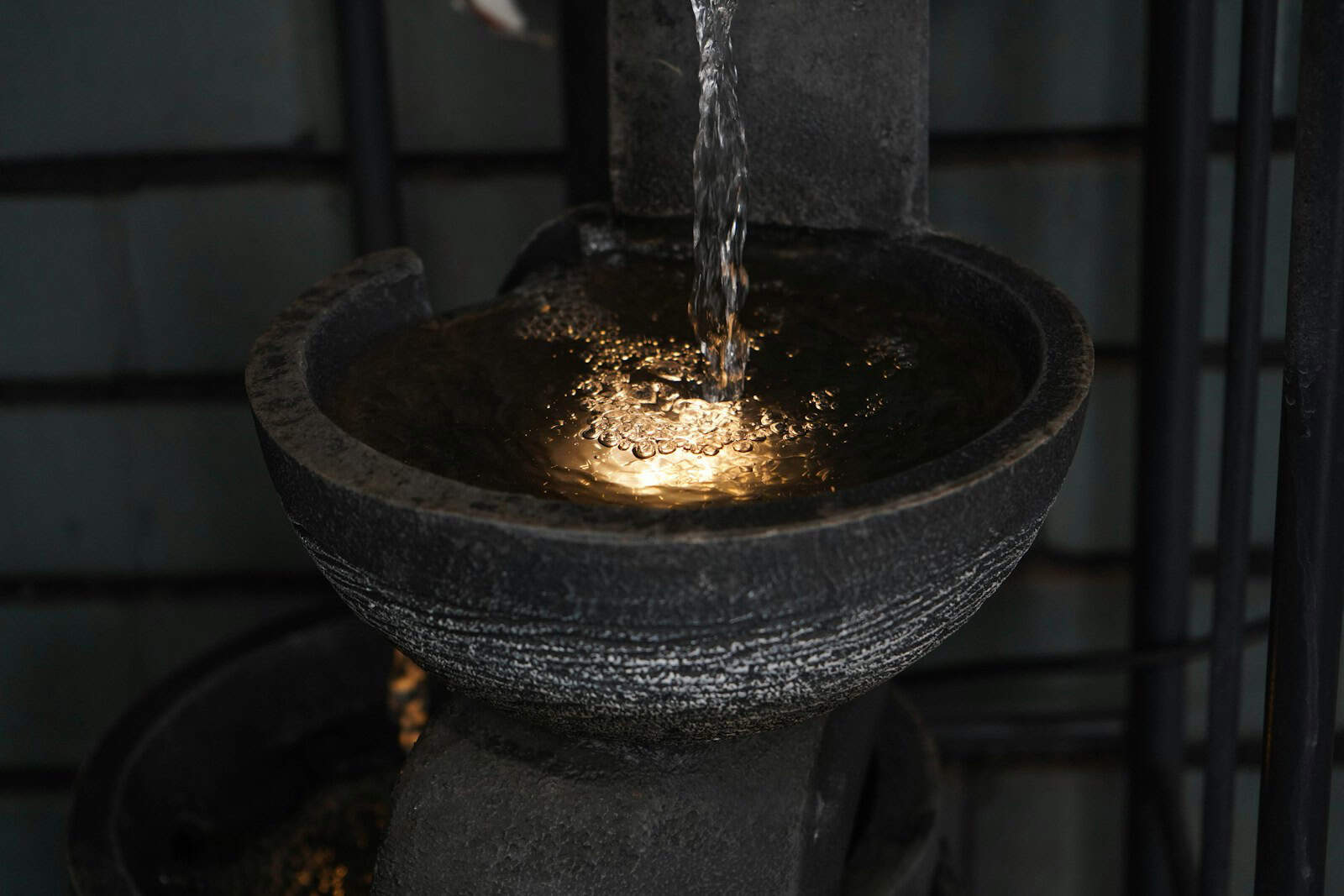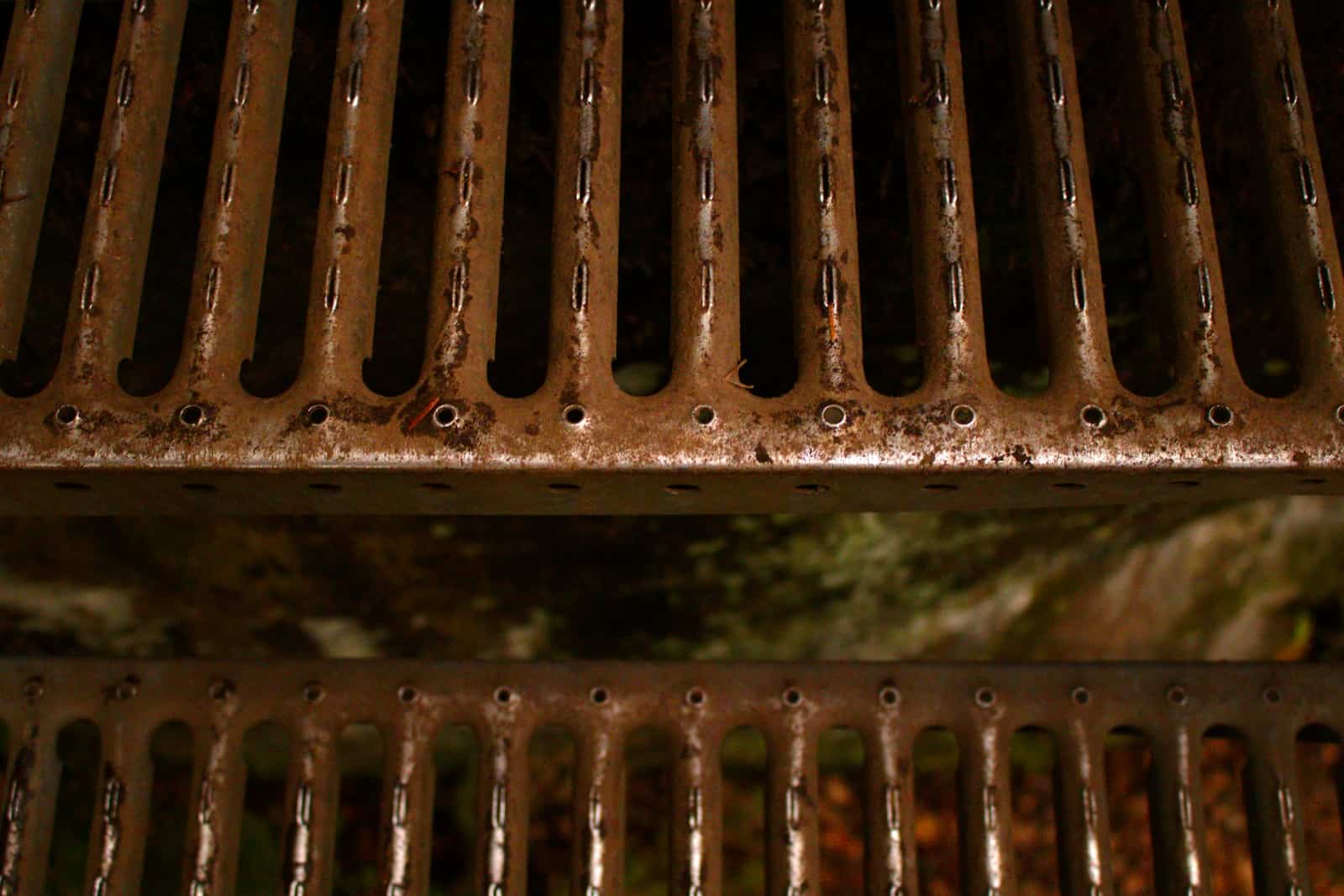The Science of Durability: Understanding How Hot-Dip Galvanizing Works
When protecting steel from rust, there’s an important difference between a simple surface coating and a true chemical bond. While paints and other protective coatings just sit on top of steel, hot-dip galvanizing creates an entirely new surface that becomes part of the steel itself. This article explains the scientific principles that make this process one of the best ways to protect steel from corrosion. We’ll explore how the process works, from the basic chemical reactions in the galvanizing bath to the final quality checks. Understanding these principles shows why hot-dip galvanizing isn’t just a coating, but an engineered solution that provides both a physical barrier and active protection for long-lasting steel durability.

The Scientific Foundation
The effectiveness of hot-dip galvanizing comes from basic chemistry and metallurgy. To truly understand how well it works, we need to look beyond simply dipping steel in zinc and understand the complex reactions that happen at a microscopic level. It’s this controlled, high-temperature reaction that transforms a simple steel piece into a composite material with exceptional resistance to environmental damage.
The Galvanizing Bath
The center of any galvanizing plant is the kettle, which works not as a simple hot bath but as a controlled chemical reactor. This large container holds molten zinc, which must be at least 98% pure zinc according to standards like ASTM B6. The remaining percentage consists of specific metals added to control the process and improve the final coating. For example, a small amount of aluminum (typically around 0.005%) is often added to improve how the bath flows and the brightness of the coating. Nickel may be added in controlled amounts to help moderate how certain steels react, preventing overly thick and brittle coatings.
The process depends on temperature. The galvanizing reaction works best within a specific temperature range, typically 445-465°C (830-870°F). This range is chosen based on the zinc-iron phase diagram, as it promotes the ideal reaction rate and formation of the desired alloy layers. Operating below this range results in a slow, thick bath and poor coating formation, while going above it can speed up the reaction uncontrollably, leading to poor coating structures.
A True Chemical Bond
When a chemically clean steel piece is dipped in the molten zinc, a diffusion process begins immediately. Iron atoms from the steel surface dissolve into the molten zinc, and zinc atoms move into the steel surface. This mixing of atoms is not a mechanical bond like paint, but a true chemical reaction. This process can be summarized in a clear sequence:
- Diffusion: Iron atoms from the steel begin to dissolve into the surrounding molten zinc.
- Reaction: The dissolved iron reacts with the zinc at the interface, controlled by the high temperature.
- Crystallization: As the iron and zinc react, they form new, distinct zinc-iron alloy crystals that grow outward from the steel surface.
This sequence results in a coating that is fused to the steel, not just stuck to it. The practical benefits are huge, leading to superior adhesion that resists chipping and flaking, and an inherent toughness that provides exceptional scratch resistance.
Understanding the Different Layers
A key advantage of hot-dip galvanizing is its layered structure, which is the source of its legendary toughness. The process doesn’t form a single, uniform layer but a gradient of distinct zinc-iron alloys. Each layer has a unique composition and hardness, creating a composite that transitions from the hardness of the alloys to the flexibility of pure zinc. Closest to the steel, the layers are harder than the base steel itself, providing strong physical protection. The outermost layer is pure zinc, which is relatively soft and flexible, capable of absorbing impacts.
This layered structure is the secret to the coating’s durability.
Table 1: The Different Layers of a Hot-Dip Galvanized Coating
| Layer Name | Composition (Approx. % Iron) | Hardness (DPH) | Key Characteristic |
| Eta (η) | < 0.03% | ~70 | Pure zinc outer layer; provides primary corrosion barrier and flexibility. |
| Zeta (ζ) | ~6% | ~179 | Thickest alloy layer; provides significant scratch resistance. |
| Delta (δ) | ~10% | ~244 | Very hard and scratch-resistant; tightly bonded to the layer below. |
| Gamma (Γ) | ~25% | ~250 | Thinnest, hardest layer; forms the initial bond directly with the steel. |
| Steel Base | 100% | ~159 | The underlying steel piece. |
A Step-by-Step Process
Connecting the scientific theory to practical application requires a detailed walkthrough of the galvanizing process. The journey of a steel piece through a galvanizing plant is a sequence of carefully controlled chemical and physical steps. The process is divided into three main stages: surface preparation, galvanizing, and post-treatment/inspection. Each step is critical; a failure in one compromises the integrity of the entire system.
Chemical Surface Preparation
It’s an industry rule that 99% of all galvanizing coating problems can be traced back to poor surface preparation. The chemical reaction can only occur on a perfectly clean steel surface, free from all organic and inorganic contaminants. This is achieved through a series of chemical cleaning tanks.
- Degreasing/Caustic Cleaning: The first step removes organic contaminants like oil, grease, and cutting fluids. The steel is dipped in a hot alkaline solution (caustic soda). This process, known as saponification, chemically converts the fats and oils into soluble soaps that can be rinsed away.
- Rinsing: After caustic cleaning, the steel is rinsed in water to remove any leftover alkaline solution and prevent it from contaminating the next acid tank.
- Acid Pickling: The steel is then dipped in a tank of acid, typically hydrochloric acid at room temperature or heated sulfuric acid. The acid’s function is to remove inorganic surface contaminants, primarily mill scale (iron oxides formed during steel manufacturing) and rust. A simplified reaction for removing rust (iron(III) oxide) with hydrochloric acid is: `Fe₂O₃ + 6HCl → 2FeCl₃ + 3H₂O`.
- Fluxing: The final preparation step involves dipping the steel in a zinc ammonium chloride solution. The flux has two crucial roles: it performs a final micro-cleaning of the steel surface, removing any light oxides that may have formed after pickling, and it deposits a protective crystalline layer on the steel. This layer prevents re-oxidation of the steel as it travels through the air to the galvanizing kettle and helps the molten zinc wet the surface.
The Galvanizing Immersion
With the surface chemically prepared, the steel is ready for immersion in the molten zinc kettle. During this stage, the chemical reaction described previously takes place. An experienced galvanizer can observe several visual cues. As the steel enters the 450°C bath, the flux layer evaporates, and the moisture present causes vigorous “boiling” on the surface. This bubbling is a sign that the zinc is reacting with the steel. The reaction is considered complete when this boiling action stops, indicating that the zinc-iron alloy layers have fully formed.
The final coating thickness is primarily controlled by two factors: immersion time and withdrawal speed. Longer immersion times allow the diffusion process to continue, growing thicker alloy layers. The withdrawal speed is equally critical. A slow, smooth, and steady withdrawal from the kettle allows excess pure zinc to drain back, resulting in a more uniform and smooth final layer. An experienced operator observes the molten zinc flowing off the steel’s surface during withdrawal, a key indicator of a well-formed, complete coating.
Post-Treatment and Inspection
Once withdrawn from the kettle, the piece undergoes final steps to ensure quality and prepare it for service.
- Quenching: The steel is typically cooled, either by immersion in a water bath (often containing a passivation agent) or by air cooling. This rapid cooling stops the chemical reaction, “freezing” the coating structure in its ideal state. It also cools the piece to a safe temperature for handling.
- Passivation (Optional): To prevent the early formation of wet storage stain (a white, powdery zinc oxide/hydroxide that can form when new galvanized parts are stored in damp, poorly ventilated conditions), a passivation solution may be added to the quench tank or applied separately. This thin chemical layer protects the surface during transport and storage.
- Inspection: The final and most critical step is inspection. This involves a thorough visual check for defects such as bare spots, dross inclusions, or roughness. Following visual inspection, coating thickness is measured using calibrated magnetic thickness gauges. These measurements are non-destructive and are performed at several points across the piece to ensure compliance with industry standards, such as ASTM A123/A123M, which specifies minimum average coating thickness based on the steel’s material category and thickness.
Process Control and Quality
Achieving a high-quality, long-lasting galvanized coating is not an accident; it is the direct result of careful process control. Understanding how key variables impact the final product provides valuable insight, enabling engineers and inspectors to diagnose coating characteristics and understand their root causes. This knowledge moves beyond basic theory into the realm of expert application and troubleshooting.
Key Process Parameters
Several variables within the galvanizing process have a direct and significant influence on the resulting coating.
- Bath Temperature: As previously mentioned, temperature controls reaction speed. Temperatures that are too high (e.g., above 465°C) can speed up the growth of the zinc-iron alloy layers, leading to overly thick and potentially brittle coatings. Conversely, temperatures that are too low result in poor zinc flow, which can cause uneven coverage and excess zinc pickup.
- Steel Chemistry: The composition of the steel itself is perhaps the most significant variable outside the galvanizer’s direct control. The presence of silicon (Si) and phosphorus (P) in the steel can dramatically increase its reactivity with molten zinc. This phenomenon, known as the “Sandelin Effect,” can cause hyper-reactive steel. Such steel develops very thick, dark grey, and sometimes brittle or flaky coatings, as the alloy layers grow rapidly and can consume the entire pure zinc layer.
- Immersion Time: The relationship between immersion time and coating thickness is direct. Longer immersion allows for more diffusion, resulting in thicker alloy layers. While a thicker coating generally provides longer life, excessive thickness can reduce flexibility and lead to flaking if the piece is later subjected to bending or impact.
- Withdrawal Rate: This parameter is critical for controlling the thickness and uniformity of the outer layer. A slow, smooth withdrawal allows excess molten zinc to drain effectively from the surface, producing a smooth, consistent finish. A rapid or jerky withdrawal can trap excess zinc, leading to runs, drips, and an unnecessarily thick outer layer.
Common Coating Defects
Understanding the root cause of potential coating problems is essential for both prevention and quality assessment. Most defects can be traced back to a specific breakdown in process control or an issue with the steel piece’s design or chemistry.
Table 2: Troubleshooting Guide for Hot-Dip Galvanizing Defects
| Defect Appearance | Common Name(s) | Root Cause(s) | Prevention/Solution |
| Uncoated patches on the steel. | Bare Spots | Poor surface preparation (oil, scale, weld slag); air entrapment in design. | Ensure thorough chemical cleaning; design for proper venting and drainage. |
| Lumps or pimples on the surface. | Dross Inclusions | Zinc-iron particles (dross) from the bottom of the kettle become suspended and stick to the work. | Proper kettle maintenance (drossing); avoid stirring the bottom of the kettle. |
| Overly thick, rough, or dark grey coating. | Grey Coating / Overly Thick Coating | Hyper-reactive steel (high Silicon/Phosphorus content); excessive immersion time or bath temperature. | Consult galvanizer about steel chemistry; control immersion time precisely. |
| Flaking or peeling of the coating. | Flaking / Peeling | Extremely thick coatings (>250 microns) due to hyper-reactive steel; stress from external impact. | Control coating thickness by managing process parameters; handle finished product with care. |
| Bulky, white, powdery surface deposit. | Wet Storage Stain | Stacking freshly galvanized items closely together in a damp, poorly ventilated environment. | Passivate the coating; ensure parts are dry and stored with adequate airflow. |
Comparison with Alternatives
To fully understand the advantages of hot-dip galvanizing, it is useful to compare it directly with other common zinc coating methods. This comparison helps specifiers make informed decisions based on the specific demands of an application, moving beyond marketing claims to focus on measurable properties and performance mechanisms.

Coating Mechanism and Adhesion
The fundamental difference between zinc coating methods lies in how the zinc is bonded to the steel surface.
- Hot-Dip Galvanizing: As established, this process creates a chemical bond through alloying, where the coating becomes an integral part of the steel surface.
- Electro-galvanizing (Zinc Plating): This is an electrochemical process where zinc is deposited onto the steel from an electrolyte solution via an electric current. The bond is atomic but does not involve the formation of thick, hard alloy layers.
- Zinc Spraying (Metallizing): In this method, molten zinc wire or powder is sprayed onto a grit-blasted surface. The bond is primarily mechanical, with the molten particles interlocking with the roughened steel profile.
Performance Comparison
The choice of coating ultimately depends on the application’s requirements for thickness, durability, and service environment. The following table provides a clear, evidence-based comparison of key attributes for the most common zinc coating technologies.
Table 3: Comparison of Zinc Coating Methods
| Parameter | Hot-Dip Galvanizing (HDG) | Electro-Galvanizing (Plating) | Zinc Spraying (Metallizing) |
| Coating Mechanism | Chemical (Alloy Layers) | Electrochemical (Plated Layer) | Mechanical (Interlocking Particles) |
| Typical Thickness | 45 – 100+ µm | 5 – 25 µm | 75 – 250+ µm |
| Adhesion | Excellent (Fused Bond) | Good | Good to Very Good (on prepared surface) |
| Scratch Resistance | Excellent (Hard alloy layers) | Poor to Fair | Good |
| Sacrificial Protection | Excellent (Full cathodic protection) | Limited (due to thinness) | Excellent (if thickness is sufficient) |
| Typical Application | Structural steel, fasteners, poles, guardrails | Small parts, indoor use, sheet metal | Large structures, onsite repairs |
Conclusion: An Engineered Solution
Hot-dip galvanizing is far more than a simple coating; it is an engineered corrosion protection system. This analysis has shown that its superior performance is a direct result of the robust scientific principles that govern its formation. The creation of a true chemical bond ensures unmatched adhesion, while the unique, multi-layered structure of hard layers provides exceptional toughness and scratch resistance. This system offers a dual-protection mechanism: the zinc acts as a durable barrier to the environment, and if that barrier is damaged, it provides active sacrificial protection to the underlying steel.
Understanding the critical role of process control—from chemical surface preparation to temperature management and withdrawal technique—is essential for appreciating the quality and consistency of the final product. When specified and executed correctly, hot-dip galvanizing stands as a sophisticated and reliable engineering choice, delivering decades of maintenance-free performance for critical steel assets. It is a solution born from the deliberate application of chemistry and metallurgy.
- Corrosion Prevention and Protection – NACE International (AMPP) https://www.ampp.org/
- Hot-Dip Galvanizing – American Galvanizers Association https://www.galvanizeit.org/hot-dip-galvanizing
- Corrosion Engineering – ASM International https://www.asminternational.org/home/-/journal_content/56/10192/06470G/PUBLICATION
- Steel Coating and Protection – SSPC https://www.sspc.org/
- Galvanizing Standards – ASTM International https://www.astm.org/products-services/standards-and-publications/standards/a123.html
- Corrosion Science and Engineering – NIST https://www.nist.gov/mml/materials-science-and-engineering-division/corrosion-group
- Metallurgical Coatings – ScienceDirect https://www.sciencedirect.com/topics/materials-science/galvanizing
- Steel Protection Methods – Engineering ToolBox https://www.engineeringtoolbox.com/corrosion-protection-d_1033.html
- Materials and Corrosion – Wikipedia https://en.wikipedia.org/wiki/Hot-dip_galvanization
- Industrial Coating Technologies – Thomasnet https://www.thomasnet.com/products/galvanizing-services-95210606-1.html





